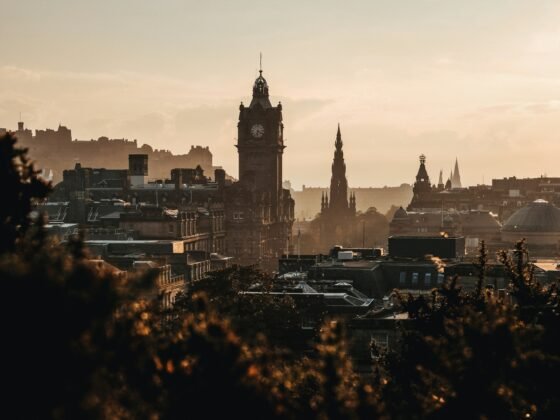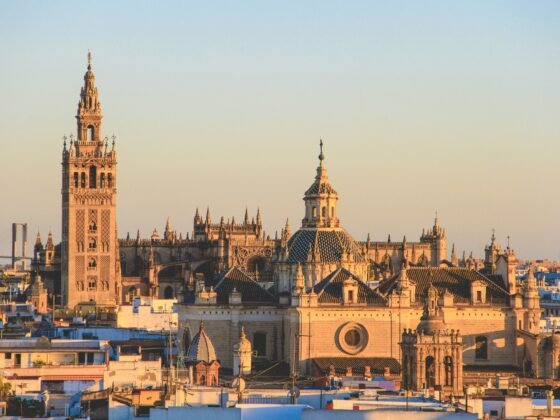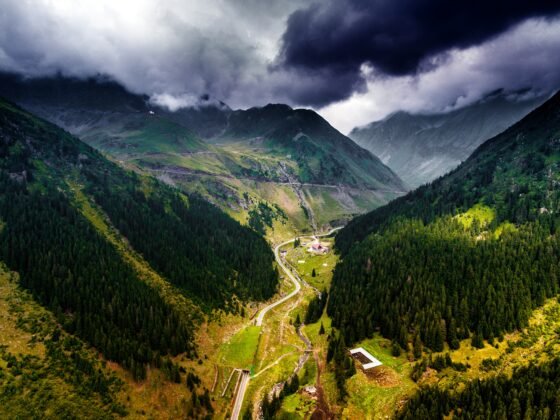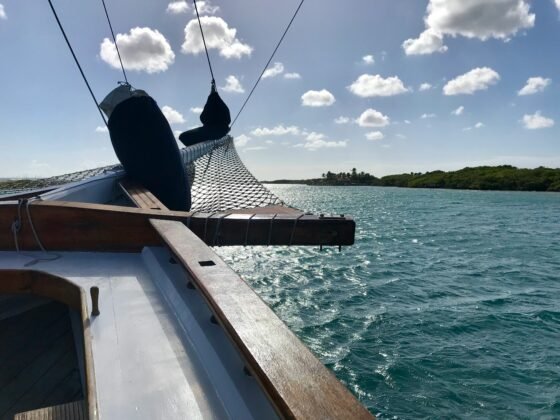
I’m planning a trip to the UK next summer, and I’m wondering – what are the best reasons to travel to Oxford?
Awe-inspiring culture, staggering architecture and the world’s most famous university. Oxford is a truly magical place, and it’s one of those cities that everybody should visit in their lifetime.
When you wander the streets of Oxford, you’re walking in the footsteps of some of the greatest thinkers in history. You can gaze on the stunning gothic spires and medieval manors of Oxford University’s famous colleges, such as Balliol and Merton.
You can also go punting on the River Isis, where Lewis Carroll first invented Alice in Wonderland, and relax in the stunning meadows around Christ Church College. If you wander past Radcliffe Square, you’ll find the door that inspired C.S Lewis to write his famous novel, The Lion, The Witch and The Wardrobe.
There are clearly countless reasons to visit Oxford, and get inspired by its history and academic prestige. However, I wanted to narrow down my options, to find the best. Let’s look at 3 top reasons to travel to the city of Oxford next summer.
What Are 3 Reasons To Travel To Oxford Next Summer?
The world’s most famous libraries and museums
Oxford is home to some of the world’s most famous and stunning museums, such as the Ashmolean Museum and the Pitt Rivers Museum. Oxford is also the centre of the Bodleian Library – one of the oldest libraries in Europe, and is world famous for being a book lover’s paradise.
Famous Museums
The Ashmolean is one of the most extraordinary museums of art and archaeology in the known world. It has some of the widest and rarest collections, from Egyptian mummies and royal relics such as the Alfred Jewel, to Guy Fawkes’ lantern and the mantle of Powhatan (Pocahontas’ father).
The Pitt Rivers Museum is truly unique, and houses over 500,000 objects, photographs and manuscripts from all over the world, and from all periods of human existence. The museum’s extraordinary collection of artefacts ranges from brass mermaid dishes from Nigeria, to axe heads from the Archaic period (8,000 BC to 1,000 BC).
The Bodleian Library
The Bodleian Library has existed since the 15th Century, and now holds over 13 million printed items. This includes a copy of every book ever published in England! Thomas Bodley sparked the development of the library from a small, abandoned medieval room to a grand institution, made up of a quadrangle, extra floors and other architectural extensions.
One tradition, fiercely guarded, is that no books in the Bodleian Library are to be lent to readers. Even King Charles I was refused to borrow a book in 1645! Over the centuries, the Bodleian Library has housed and received numerous gifts of books and manuscripts from all over the world. This collection attracts scholars from across the globe.
The Bodleian Libraries’ Special Collections (at the Weston Library) holds the second largest collection of manuscripts and archives in Britain, with items ranging as far back as papyri of the 3rd Century B.C.
Blackwell’s Bookshop
Blackwell’s bookshop is a true treasure trove – one of Oxford’s rarest gems. Situated on Oxford’s stately Broad Street, its famed Norrington Room holds one of the richest collections of books for sale in the world. With over three miles of book shelf space, it is officially the biggest bookselling room on the planet.
You can live and study on-campus for two weeks at the University of Oxford (even if you didn’t apply!)
You can live and study in the prestigious colleges of the University of Oxford, even if you didn’t get in! Oxford Royale Academy, the UK’s leading provider of summer schools, offers a truly authentic experience of life in the University of Oxford, for students ages 8-19+. Many ORA students say that it is the experience of a lifetime.
You’ll step into one of Oxford’s breathtaking colleges – perhaps The Queen’s College, or world-famous Balliol – and leave the rest of the world behind. While tourists flock to Oxford just to catch a glimpse of its famous colleges, you’ll push open those ornate doors and walk right inside. You’ll study, sleep and dine in your college, soaking up its academic atmosphere.
You’ll enjoy the best teaching, from world-renowned Oxbridge scholars and industry leaders. You’ll gain fantastic skills for the future, and absorb life-changing knowledge in Oxford University’s most exclusive buildings, such as the Examination Schools. You’ll can study an an awe-inspiring range of subjects, from Robotics and Web Development, to Creative Writing and Acting Performance, all in the matchless surroundings of the University of Oxford.
If you’re aged 16-19, you’ll attend a Great Debate in the elite Sheldonian Theatre, where the University of Oxford holds its matriculation and graduation ceremonies. You’ll hear world-class guest speakers and your peers debate some of the most pressing issues today.
At the end of your course you’ll enjoy a grand black tie ball, which includes a three-course dinner. This dinner reflects Oxford University’s famous tradition of Formal Hall, where grace is said in Latin. You’ll also have a formal graduation ceremony, to celebrate your hard work and momentous achievements.
Architecture
Oxford is worth visiting for its architecture alone. You could spend a lifetime exploring its rare medieval buildings, quads and cloisters, and soaring spires. Home to the second oldest university in the world, Oxford bears almost every style of architecture, from world-famous medieval buildings, to modern and innovative designs. Oxford has countless landmarks and buildings that are unrivalled in the UK, from the Bridge of Sighs to the tower at Magdalen College. Let’s look at a few highlights:
- St George’s Tower in Oxford Castle is one of Oxford’s most ancient structures – built 1020 AD (nearly a thousand years ago!). Imposing and defensive, it was part of the original motte-and-bailey Oxford Castle.
- The Sheldonian Theatre was built in 1669 as the the official, ceremonial hall of the University of Oxford, where matriculation and graduation ceremonies take place. It is an extraordinary and stunning historic building, in the neo-classical style, modelled after the Theatre of Marcellus at Rome.
- Christ Church Cathedral is the most impressive chapel of all the Oxford colleges. It comes with a famous story. St Frideswide, an Anglo-Saxon princess and the patron saint of Oxford refused to marry, in order to found a convent. This went against the wishes of the king, who wished to marry her. The townspeople of Oxford protected her, and she founded a convent on the site of what is now Christ Church.
Punting
Punting is a quintessentially Oxford activity. It’s an idyllic and gorgeous experience, which involves drifting lazily down or up river in your punt, past the university, or Oxford’s lush meadows. You can gaze on the rich variety of wildlife and Oxford’s dreaming spires on the horizon. Drop in on Oxford’s treasured pubs such as The Perch or the Victoria Arms for a cool drink on your way. You can hire punts from Magadalen Bridge Boathouse or Cherwell Boathouse in Oxford.
One of the most exciting things about Oxford, is when you stumble open its lesser-known places, and find the most delightful treasures.
- Oxford’s historic Covered Market, for example, has been home to the most vibrant and varied stalls since 1774. First established to house the “inconvenient” stalls selling “Meat, Fish and Garden Stuff” that were blocking “Coaches, Carts and other Carriages” in the city, it boasts a rich variety of stores and eateries, from Thai restaurants and butcher’s shops, to jewellers and cake shops.
- Oxford has some really unique cafes, tucked into corners and cloisters around the city. The Missing Bean has some of the finest beans and blends, and will brew you a purely artisanal cup of coffee. Oxford’s Queen’s Lane Coffee House is the oldest working coffee house in the whole of Europe, and you can grab a cappuccino there today. It opened in 1654, just before the Great Fire of London.
- Oxford is also home to some really famous pubs, where great authors such as C.S. Lewis and J.R.R. Tolkein gathered to discuss their novels and manuscripts. The Lamb & Flag pub on St Giles is where Thomas Hardy wrote his famous Oxford-based novel, Jude the Obscure. The Eagle and Child was the famous meeting place of the Inklings, a famous literary group formed by C.S. Lewis and J.R.R. Tolkein.












